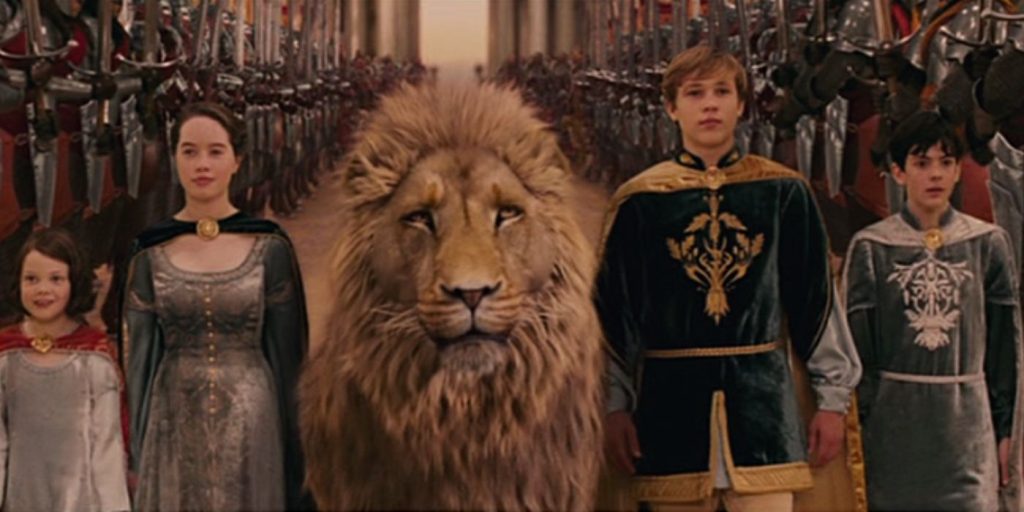The Chronicles of Narnia story has warmed the hearts of readers, young and old, since its first publication in the 1950s. When the Narnia books were adapted into films, the magical world of talking animals, witches, and centaurs was brought to life, giving viewers an epic action adventure story for the whole family. While the first film was incredibly well-received, both in terms of box office and critical reception, the films seemed to lose steam as they went on, with the third entry being the last film despite there being seven published books.
It has been announced that Narnia will be given another chance with a reboot series in the works at Netflix with Greta Gerwig as showrunner. Fans are thrilled to see Gerwig’s take on the books by C.S. Lewis and have gone back to watch the trilogy of films. Upon a rewatch, there are a lot of odd details in the films that viewers may not have noticed.
The Name Origin of Cair Paravel
The Home of the Rulers of Narnia Has an Interesting Etymology
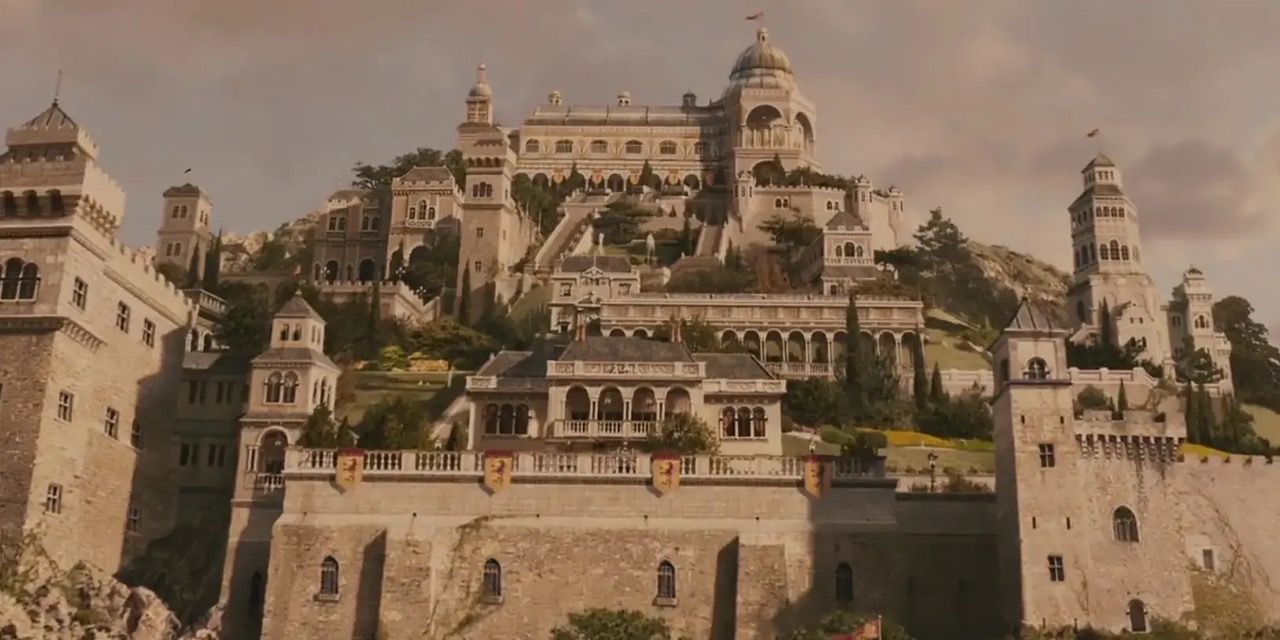
When the film audience was first introduced to the land of Narnia, they were introduced to a rulerless land with the White Witch’s reign of terror at its prime. However, with the arrival of the Pevensie children, the promised Kings and Queens of Narnia, everything changes. In the final scenes of The Chronicles of Narnia: The Lion, The Witch, and The Wardrobe, the Pevensie children are coronated by Aslan at a large castle in Cair Paravel.
Cair Paravel was destroyed during the Telmarine Conquest, with the Pevensie finding the castle in ruins when they return in The Chronicles of Narnia: Prince Caspian.
Cair Paravel is the capital of Narnia and home to the royalty. Many may not know that the name Cair Paravel can be translated to “lesser court,” with Cair coming from the Welsh word for fortress, “care,” and Paravel coming from the old French “paravail,” meaning “below.” The phrase lesser court likely refers to Aslan being the true ruler of Narnia, with the Kings and Queens ruling under him.
The Films Are Full of Lion Imagery
The Films Highlight Aslan Even in Scenes When the Character Is Not Present
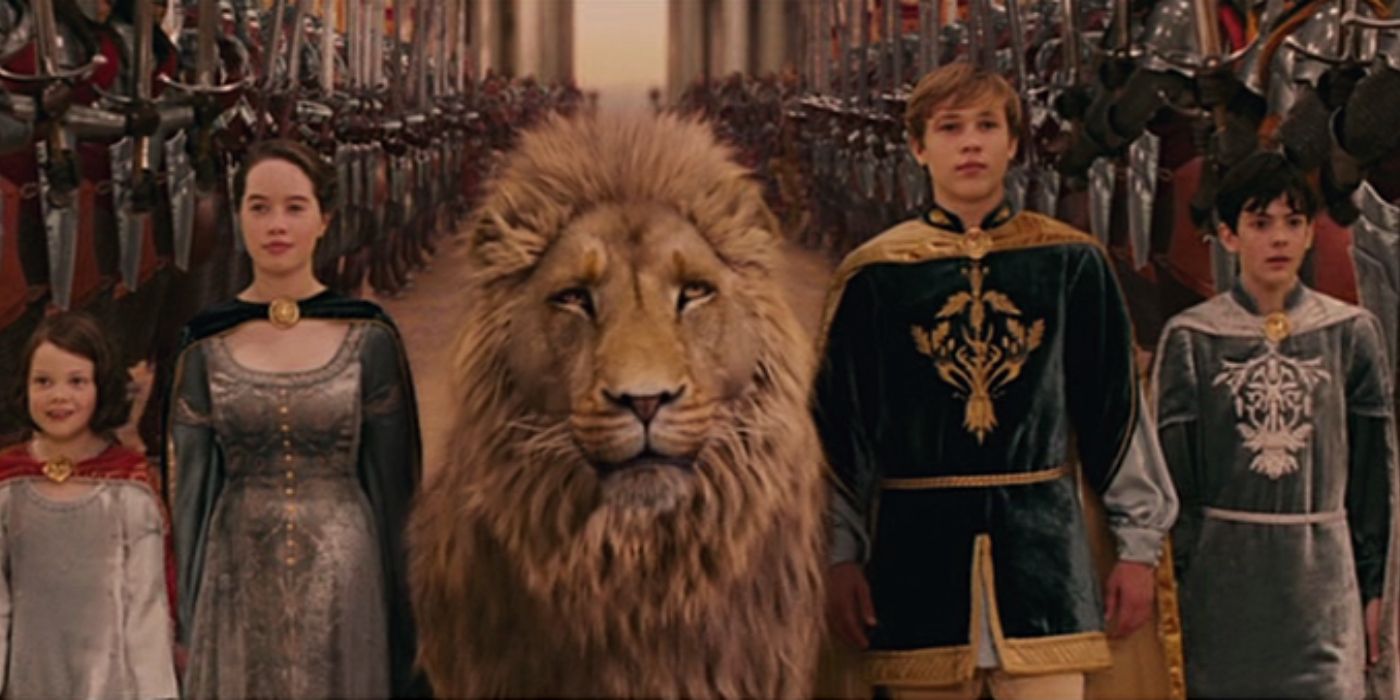
It’s no secret that Aslan, a large, majestic talking lion, is an incredibly important character in the Narnia story. The first film does a fantastic job at leading up to Aslan’s introduction, with several characters talking about him but never outright saying that he is a lion, leading to quite a surprise when he is first shown on screen.
Liam Neeson voiced Aslan in the Chronicles of Narnia films.
However, the Narnia movies feature a lot of lion imagery. Whether it be in the architecture of Narnia, the design of Susan’s horn looking like an open-mouthed lion, or the lion insignia on Peter and Edmund’s armor. Even in the human world, lion statues are shown, showing that Aslan’s power transcends the barrier between worlds.
The End Credits of the Third Film Is a Touching Tribute
The Dawn Treader End Credits Features Art by Pauline Baynes
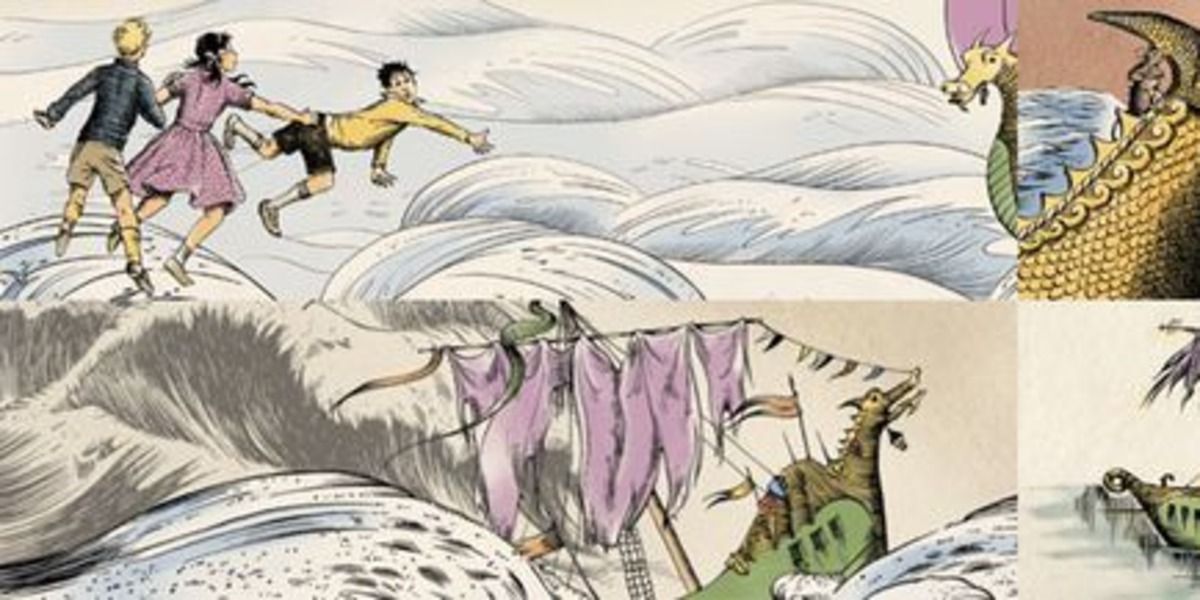
The third film in the Narnia franchise, The Chronicles of Narnia: The Voyage of the Dawn Treader, was the final film of the trilogy and saw many issues in production, including changes in production studio, screenwriters, and direction. Given the disappointing performance of Prince Caspian compared to the first film, it was clear that Dawn Treader would be the final film. Fox decided to give the film a sentimental end credits sequence as a way to pay homage to the original book series.
Pauline Baynes contributed as an illustrator to over 200 books, including The Chronicles of Narnia and The Adventures of Tom Bombadil by J.R.R. Tolkien.
The end credits sequence of the film features artwork reminiscent of the artwork in C.S. Lewis’ books, which were originally illustrated by Pauline Baynes. Baynes worked very closely with Lewis for decades, providing the visuals that so many readers associated with the Narnia story. Baynes also worked with J.R.R. Tolkien of Lord of the Rings fame, and when she passed away in 2008, Dawn Treader gave her a touching tribute by including her artwork in the end credits for the final Narnia film.
Why the Pevensie Children Are Referred to as Sons of Adam and Daughters of Eve
This Descriptor References the Religious Allegory of the Series
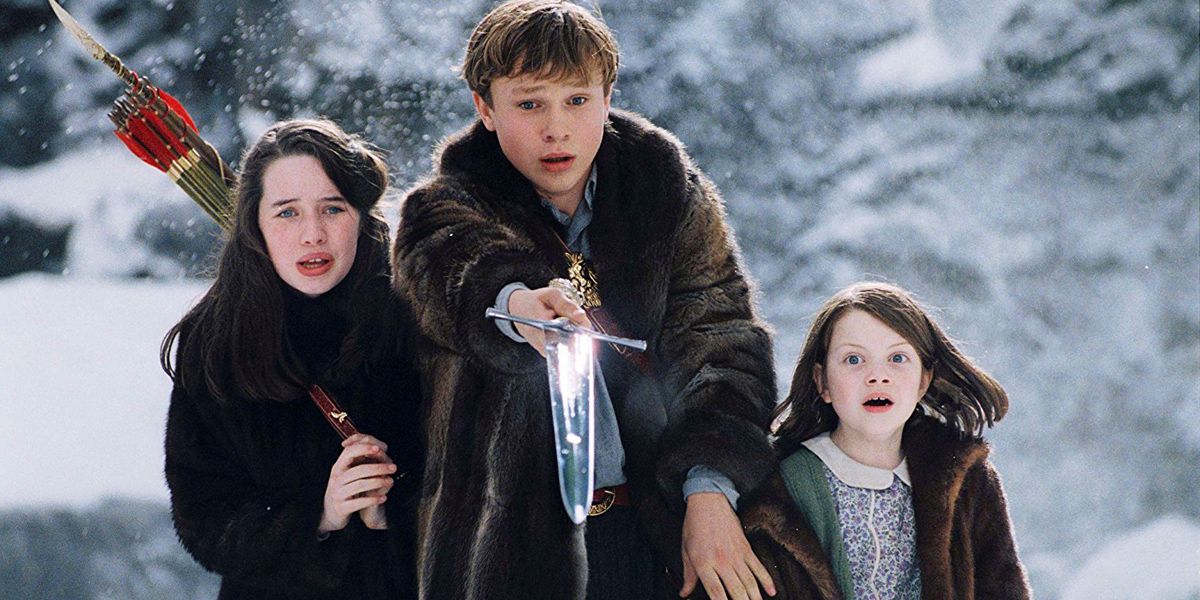
It is common knowledge that C.S. Lewis wrote a lot of his religious beliefs into the Narnia story, with the entire series essentially being an allegory for Christianity. While the films did slightly tone down the religious aspects of the story for a wider audience, there are still very obvious hints throughout. One of the earliest examples comes when the Pevensie children arrive in Narnia.
Peter Pevensie, Susan Pevensie, Edmund Pevensie, and Lucy Pevensie were portrayed by William Moseley, Anna Popplewell, Skandar Keynes, and Georgie Henley, respectively.
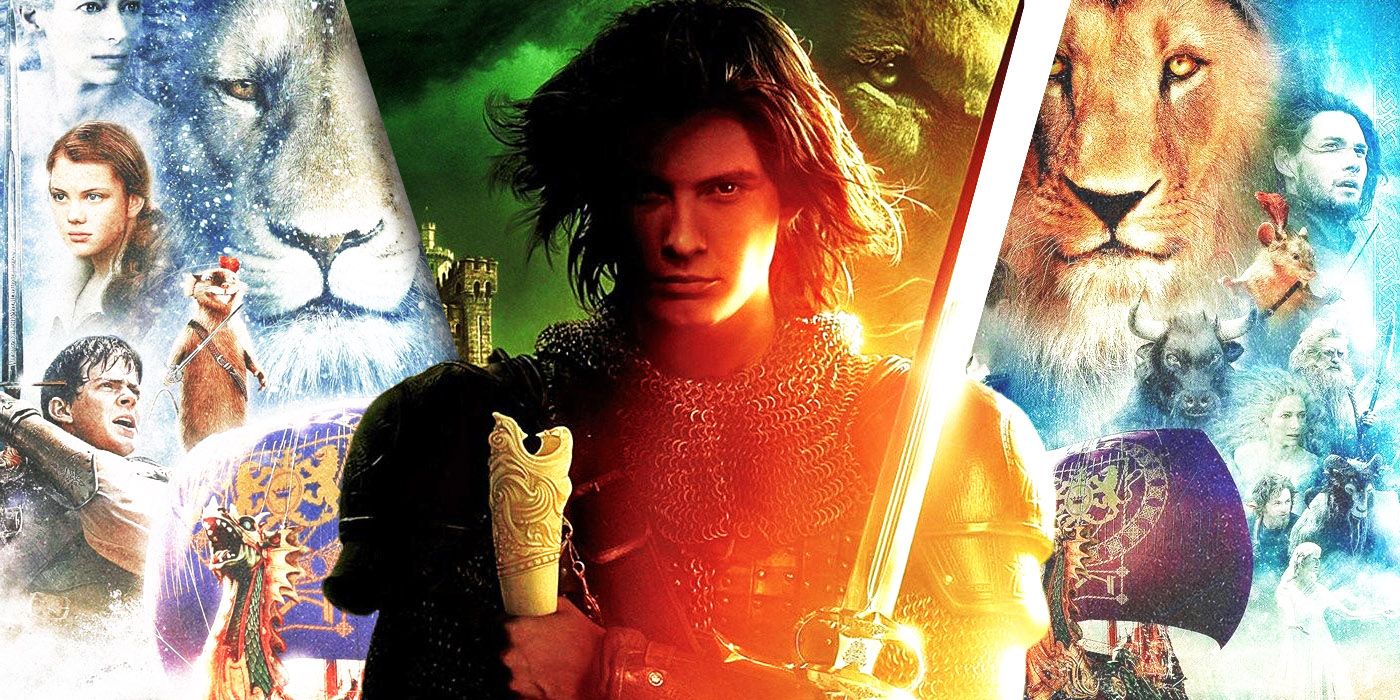
Related
How to Watch the Narnia Movies in Order
With Disney and the BBC mini series to consider, what is the order to watch all the Narnia films, and will there be more on the horizon?
When the Pevensies arrive in the magical land, many of the characters refer to them as Sons of Adam and Daughters of Eve. This is obviously in reference to the Adam and Eve of Genesis in the Bible. In the Narnia series, all human characters are referred to as Sons of Adam and Daughters of Eve, with the White Witch being the only exception.
The Symbols of the Stone Table
The Table Aslan Is Sacrificed on Features an Interesting Quote
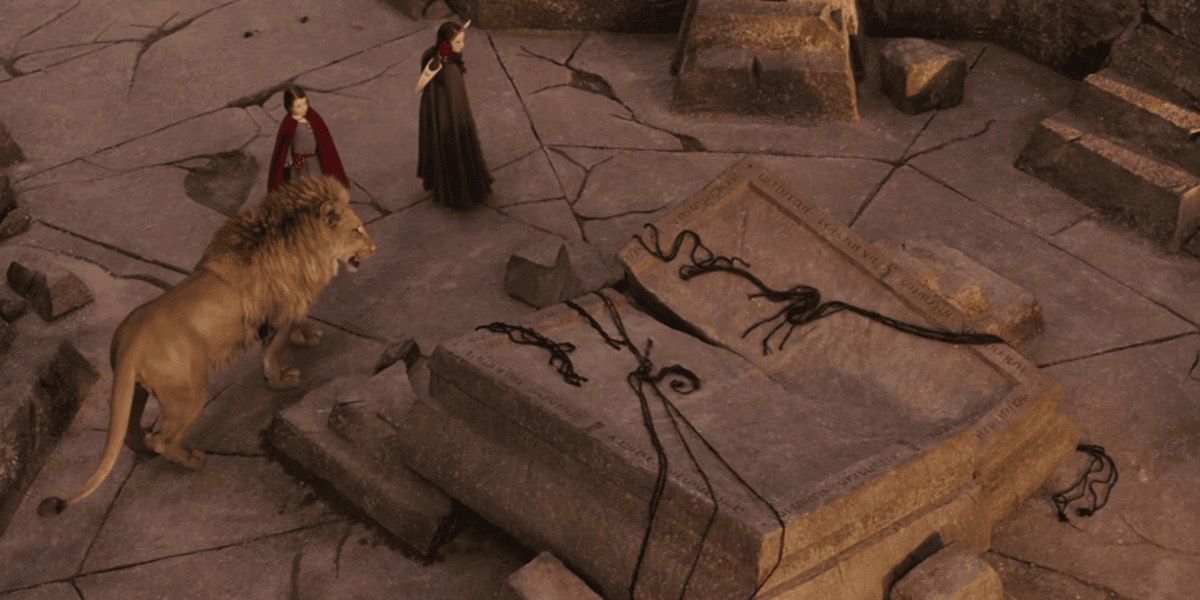
Another major example of the religious imagery in the first Narnia film comes with the stone table on which Aslan is sacrificed on. In the film, when Lucy and Susan arrive at the table to find Aslan’s dead body, symbols can be seen written around the edge of the table. While no explanation is given in the film, the symbols are understood to be from an old Narnian language.
Aslan’s sacrifice and his resurrection is an allegory for the crucifixion and resurrection of Jesus Christ.
However, in the book, Lewis reveals that the writing states, “If a willing victim that has committed no treachery is killed in a traitor’s stead, the Stone Table will crack; and even death itself would turn backward.” This provides the explanation for Aslan’s resurrection, as he sacrificed himself to save Edmund Pevensie, who betrayed his siblings to the White Witch.
The Beaver’s Take On Fish and Chips
The Films Gave a Comedic Take On the British Staple Dish
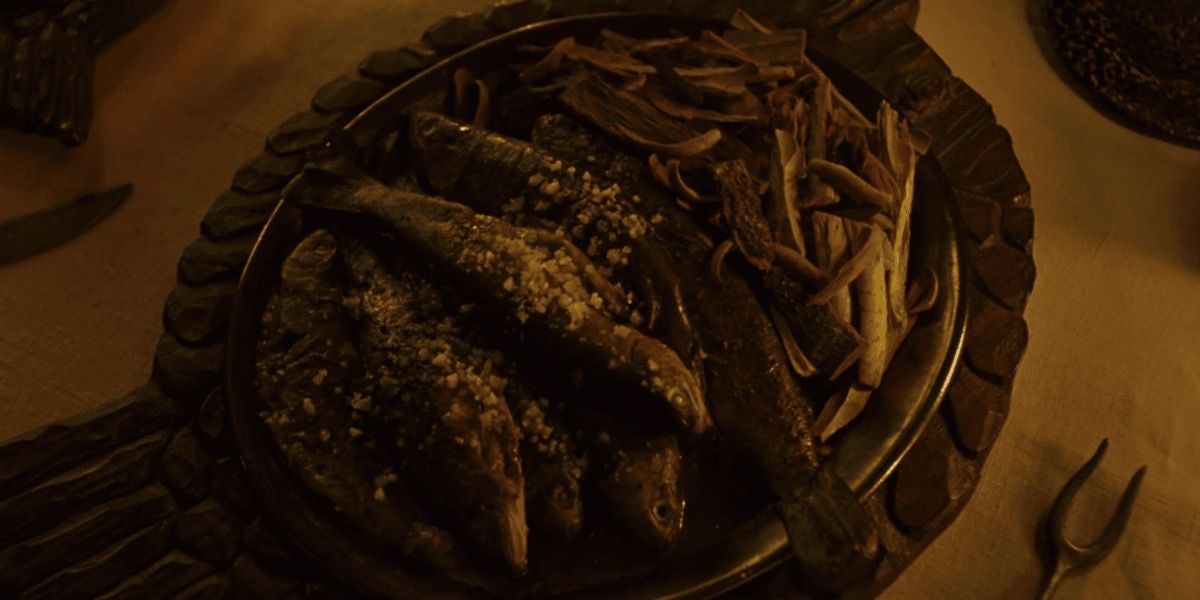
The land of Narnia during The Lion, The Witch, and the Wardrobe is populated with talking animals. Some of these animals the Pevensie children first meet are a pair of beavers named Mr. and Mrs. Beaver, who take the Pevensie children to their home after the disappearance of Mr. Tumnus.
Ray Winstone provided the voice of Mr Beaver in The Chronicles of Narnia: The Lion, The Witch, and the Wardrobe, while Mrs Beaver was voiced by Dawn French.
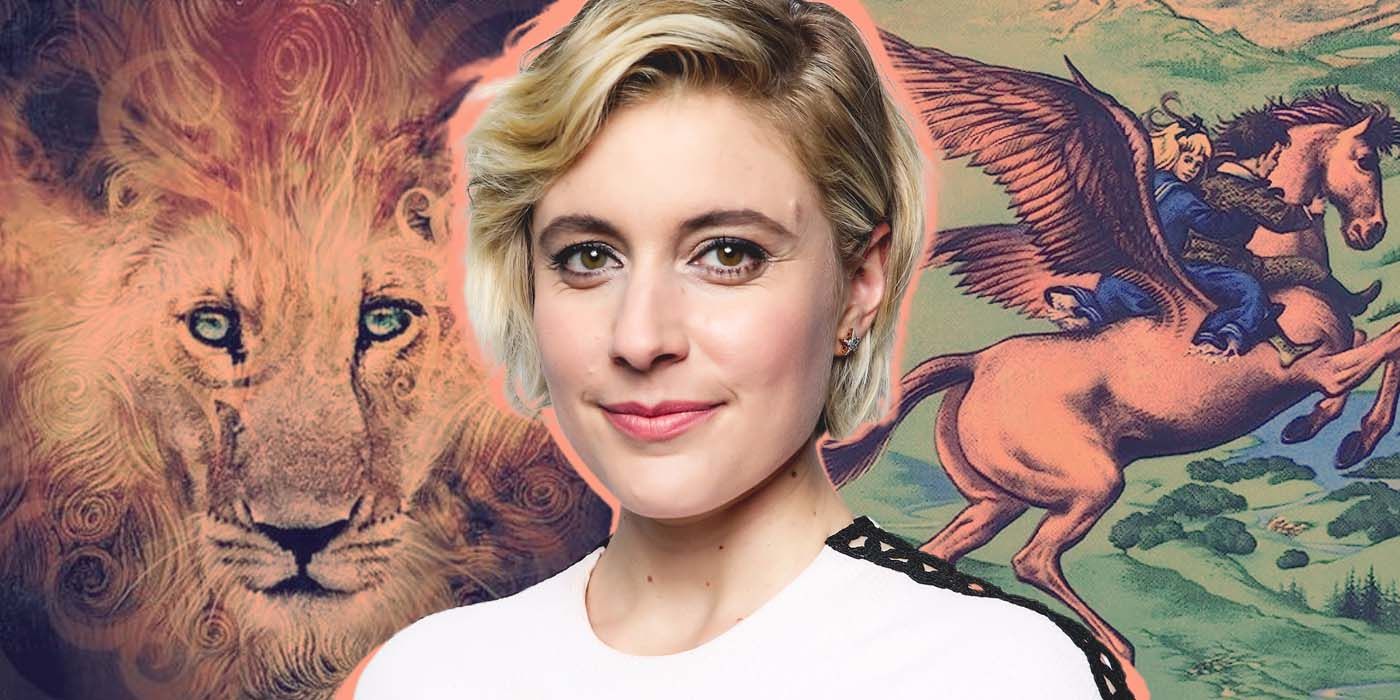
Related
Greta Gerwig Gets Good News Amid Clash With Netflix Over Chronicles of Narnia Reboot Release
Greta Gerwig may be successful in pushing back against Netflix over the streamer’s release plans for her Chronicles of Narnia films.
During their visit to the Beavers’ home, the children are offered a dinner of fish and chips. As the Pevensie children grew up in England, they were likely expecting the typical staple dish of the United Kingdom. However, when they are given their food, the chips seem to be wood chips. While this is bizarre to the human children, it makes complete sense for a family of Beavers. This is a small, comedic detail that really helps build the world of Narnia and the creatures that inhabit it.
The Films Used Animatronic Reindeer
New Zealand Denied Production’s Request to Bring In Real Reindeer
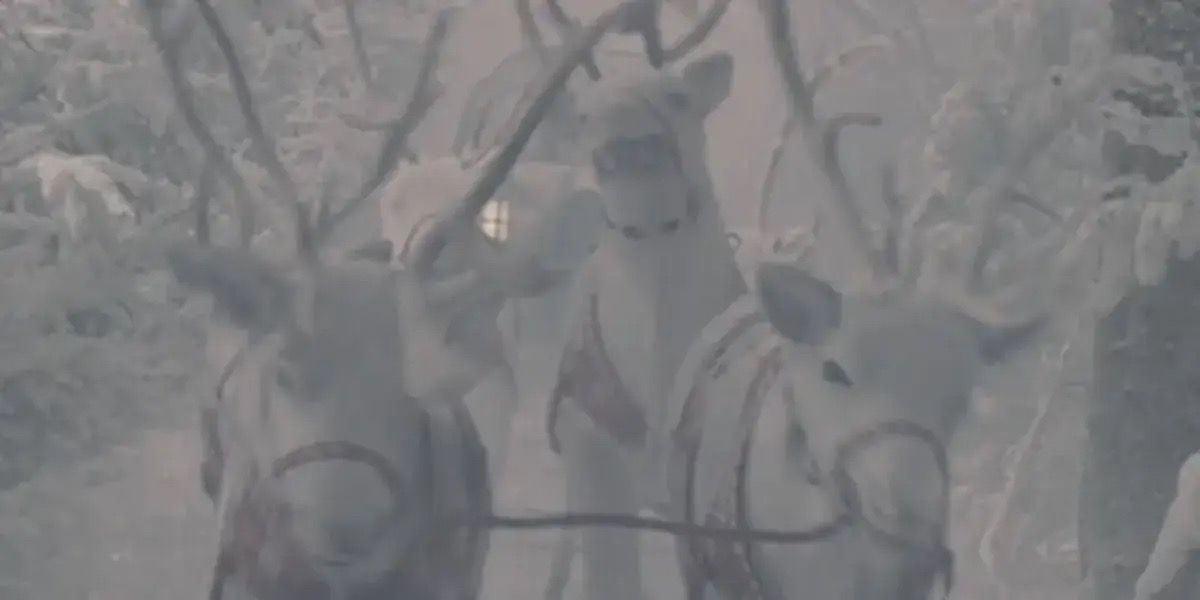
Despite Narnia taking place in a fantasy realm, Christmas is a very present theme throughout the story, with the White Witch’s reign leading to a never-ending winter without Christmas. The White Witch herself rides a sleigh pulled by white reindeer, with Father Christmas, who the Pevensie children meet during the first film, also rides a sleigh pulled by reindeer.
James Cosmo portrayed Father Christmas in The Chronicles of Narnia: The Lion, The Witch, and the Wardrobe.
Interestingly, the production of the first film, which was shot mostly in New Zealand (another connection to The Lord of the Rings), planned to ship in 12 reindeer. However, New Zealand’s Ministry of Agriculture and Forestry are very strict about what animals are allowed in their country, so they refused the request. The reindeer in the film were animatronic, which allowed for the same reindeer to be used for both the White Witch’s sleigh and Father Christmas’ sleigh, simply swapping out the white fur for brown.
The White Witch Towers Over the Other Humans
The White Witch Is Actually Part Giant
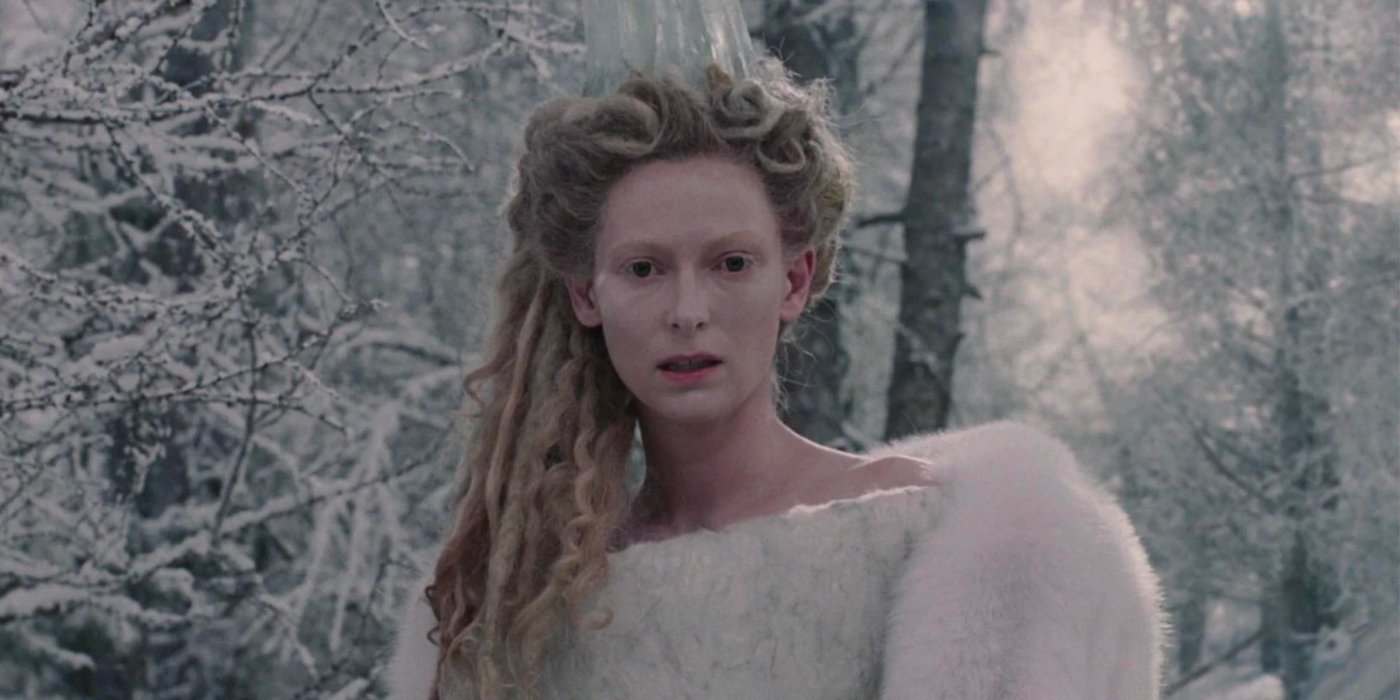
The main villain of The Lion, The Witch, and the Wardrobe is the White Witch, portrayed by Tilda Swinton in the Narnia film trilogy. One detail that is easily missed in the film is the height of the White Witch. As she is often seen in the film standing next to her dwarf sidekick, or Edmund, a child, it might not be obvious how tall the character actually is when standing next to other human characters.
The White Witch is based on several villainous figures from literature, including the titular Snow Queen from Hans Christen Andersen’s book and Satan from Paradise Lost.
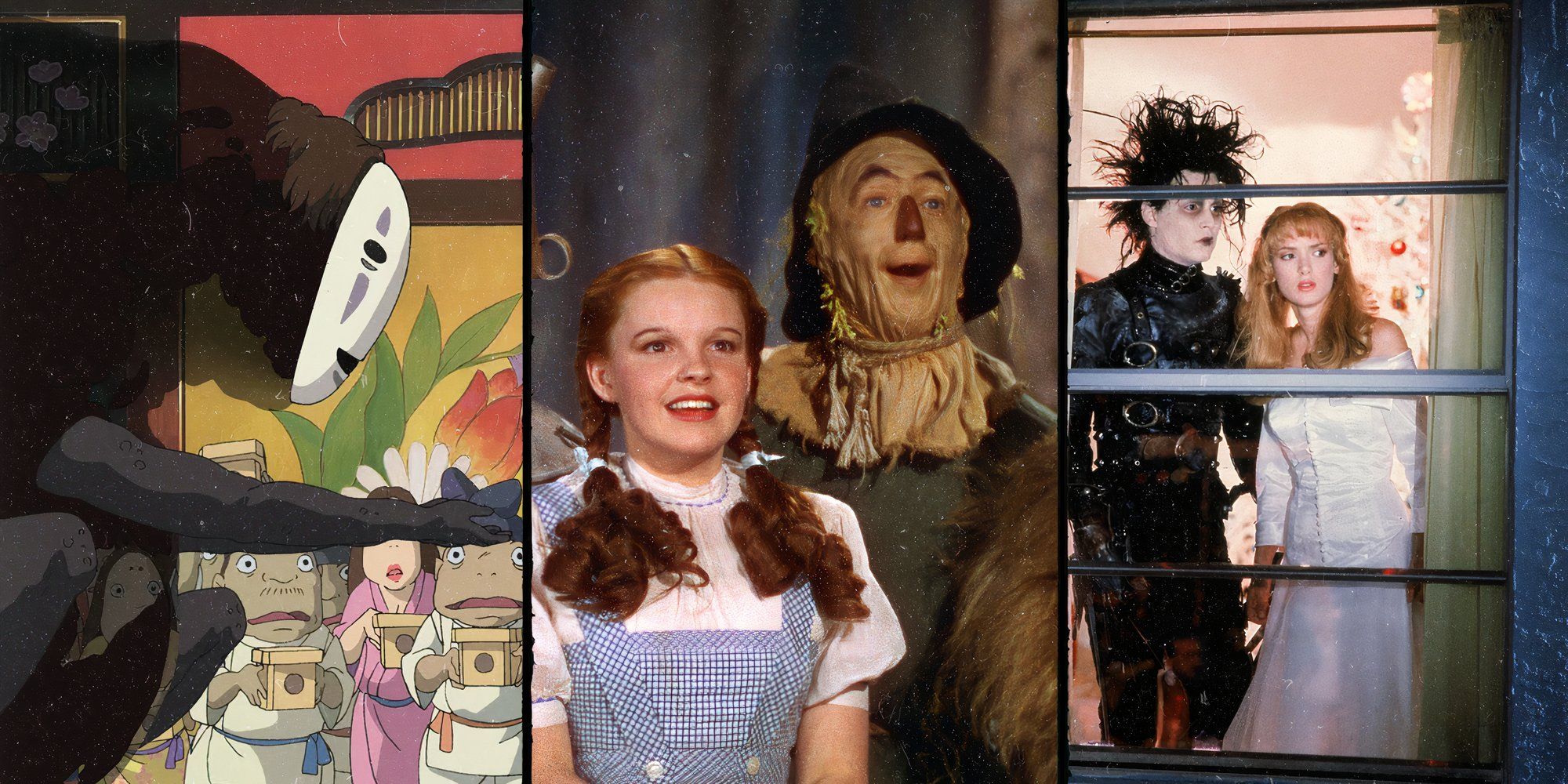
Related
13 Most Rewatchable Fantasy Movies, Ranked
Fantasy films that transport audiences to magical worlds with compelling characters and stunning visuals often become rewatchable classics.
The reason for the Witch’s height comes from her backstory, presented in The Magician’s Nephew, the sixth published book in the Narnia series. The book introduces the White Witch as Jadis, the last Queen of Charn. The book explains that she is not actually a Daughter of Eve despite her human appearance, but a Daughter of Lilith, Adam’s “first wife,” as well as being part Jinn and part giant, which explains her grand size.
The Telmarines’ Aesthetic Does Not Match Their Historical Inspiration
The Telmarines Were Given a Spanish Aesthetic in the Film
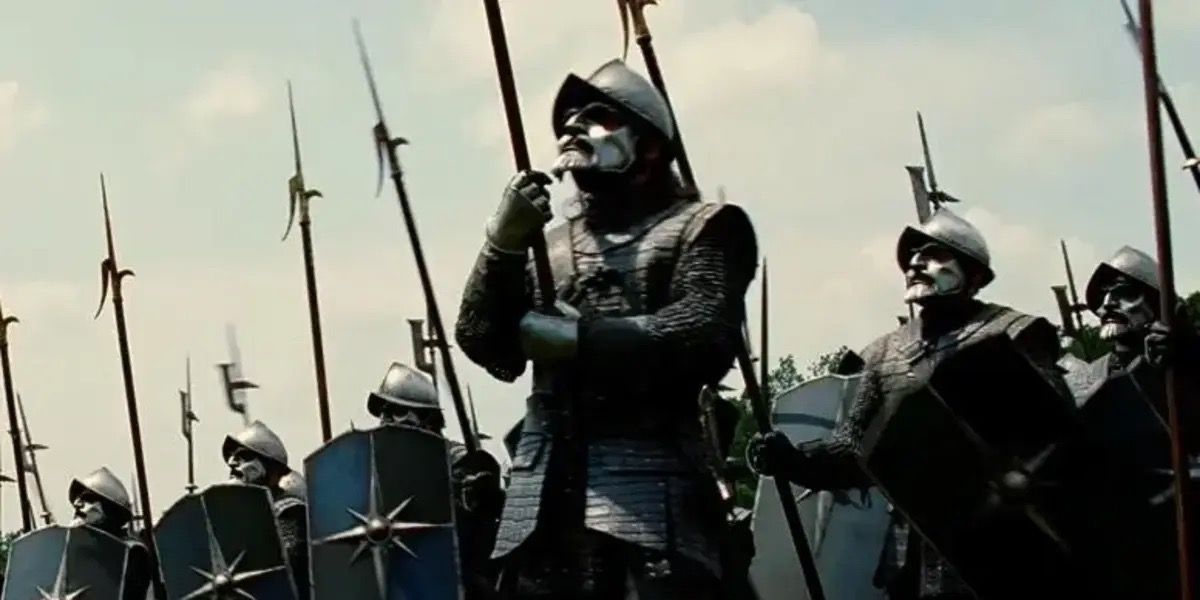
The second Narnia film, Prince Caspian, introduces the Telmarines, a group of humans who came to earth from the island of Telmar through a magical cave before invading the land. The description of the invasion was inspired by the real-life William the Conquerer’s invasion of England from Normandy in 1066 CE. (which also inspired the Targaryen takeover of Westeros in Game of Thrones).
Prince Caspian is described as “golden-headed” in the books, while Ben Barnes is dark-haired, lining up with the film’s portrayal of the Telmarine’s Spanish/Mediterranean influence.
However, despite the inspiration for the Telmarines coming from France, the films decided to assign the Telmarines a more Spanish look, specifically the Spanish conquistadors of the 16th Century. This can be seen in the designs of their armor and helmets, as well as the Spanish accents used by Ben Barnes and the other Telmarine characters in the film.
The Lioness Returns in the Coronation Scene
Edmund Draws Spectacles and a Mustache on a Stone Lion
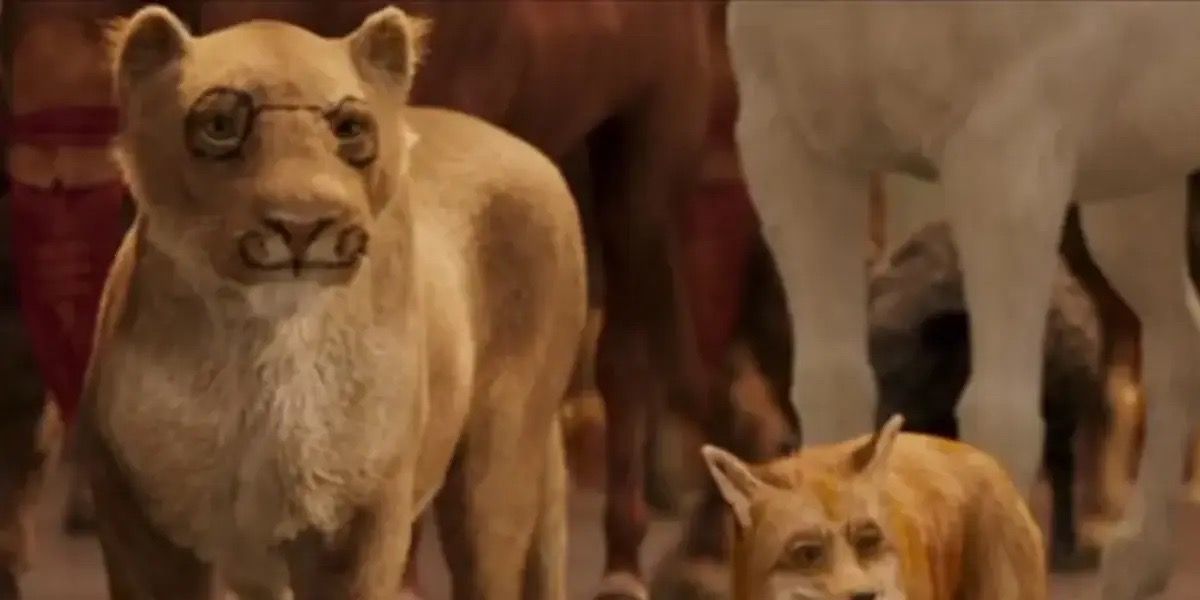
During the White Witch’s reign over Narnia during The Lion, The Witch, and the Wardrobe, she often punishes those who betray by turning them to stone, with Edmund seeing all of her victims when he first visits her castle. During Edmund’s first visit, he comes across a statue of a lioness, who he draws a cartoonish pair of glasses and mustache on, believing that she is simply a statue.
The lioness does not appear in the BBC adaptation of the Narnia series.
When Aslan rescues all of the petrified statues with his special lion breath, they are all brought back to life. During the coronation scene in which Aslan crowns the Pevensie children as the rulers of Narnia, the lioness can be seen in the crowd, with the drawn-on glasses and mustache still visible. This blink-and-you’ll miss it moment is a rather humorous detail that the films added.
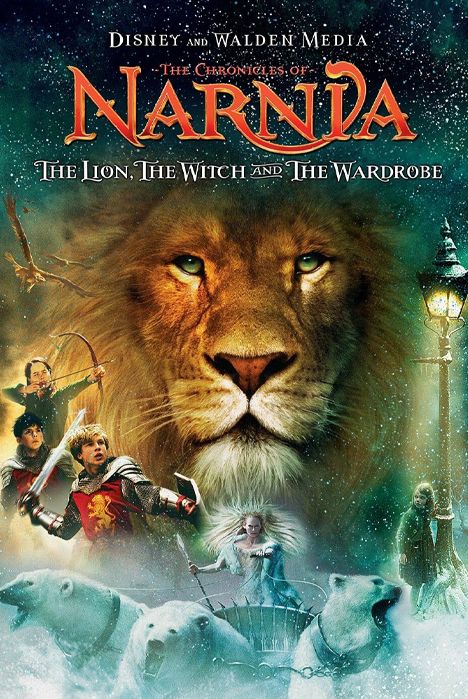
The Chronicles of Narnia
Four kids travel through a wardrobe to the land of Narnia and learn of their destiny to free it with the guidance of a mystical lion.
- Created by
-
C.S. Lewis
- First Film
-
The Chronicles of Narnia: The Lion, the Witch and the Wardrobe
- First TV Show
-
The Lion, The Witch and the Wardrobe
- First Episode Air Date
-
July 9, 1967



